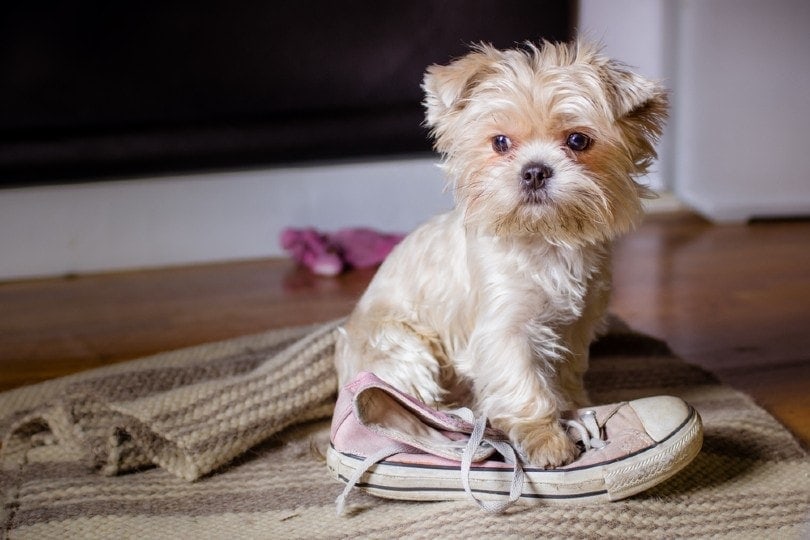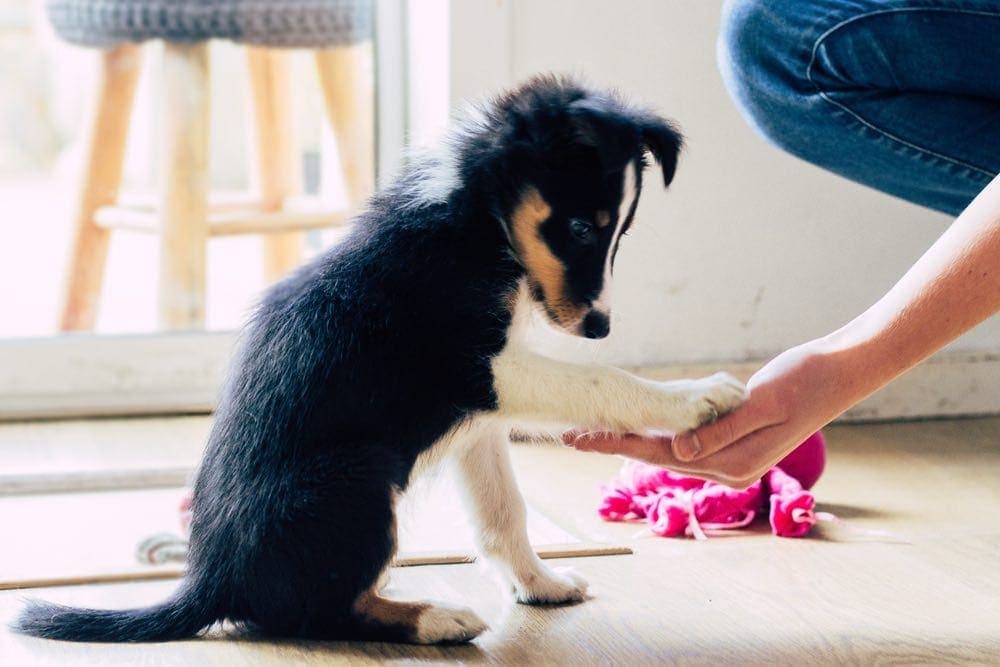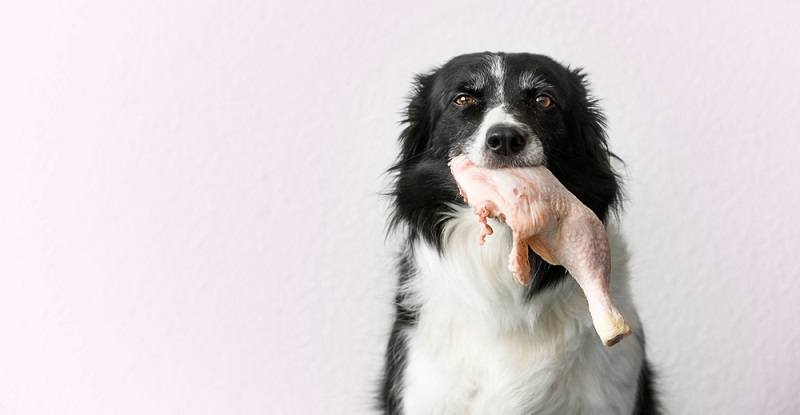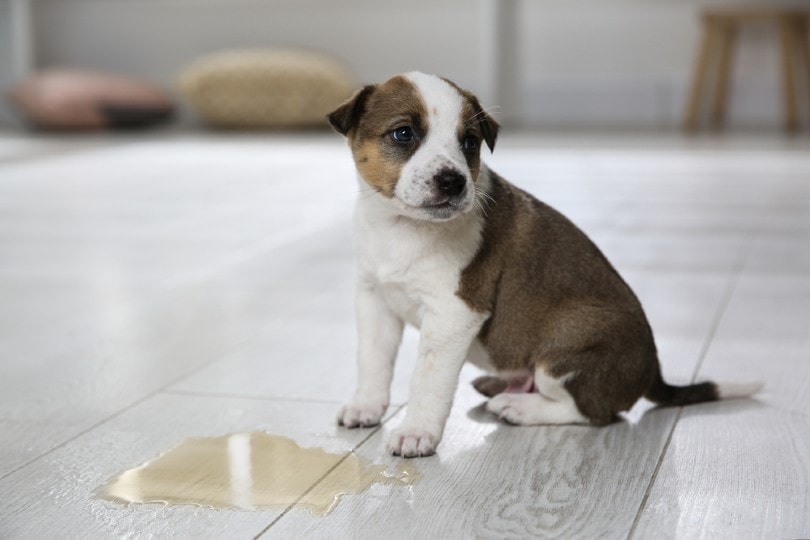Height:
25-35 inches
Weight:
100-150 pounds
Lifespan:
10 to 12 years
Colors:
White, light grey, sable, red, black
Suitable for:
Hunting, families, singles
Temperament:
Intelligent, affectionate, devoted, loyal, playful, friendly, dignified, outgoing
The Giant Alaskan Malamute is a majestic and dignified animal, with a wild appearance that closely resembles its ancient wolf heritage. Many people understandably mistake them for Huskies, as they have similar coloring and characteristic face masks, but these dogs are far larger and do not have the iconic blue Husky eyes.
The Giant Alaskan Malamute is not a separate breed, but rather an oversized version of the standard Alaskan Malamute. They have been selectively bred for the biggest puppies possible, and in fact, many purist breeders criticize the practice because they want to preserve the breed standard. These dogs are incredible to look at, even though critics claim that the “giant” Malamute is a gimmick used to sell more puppies. Either way, they are much larger than standard Malamutes, which only reach weights of up to 85 pounds. Giant Malamutes are typically in excess of 100 pounds and often reach up to 150 pounds.
However, size is the only differing factor between the Giant and standard Malamutes, and they are identical in every other way. If a giant-sized Malamute is an appealing prospect to you, read on for an in-depth look at this majestic canine.
 Giant Alaskan Malamute Puppies — Before You Buy
Giant Alaskan Malamute Puppies — Before You Buy
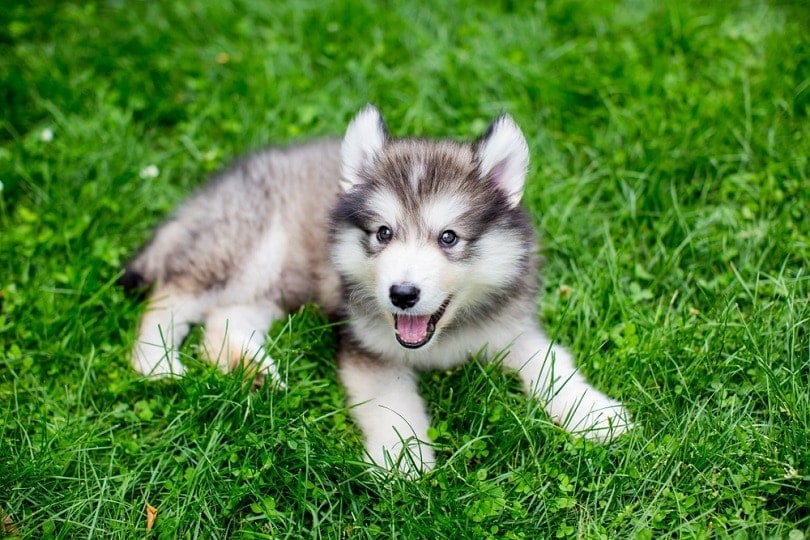
As the name suggests, Giant Alaskan Malamutes are big dogs, and before you buy a puppy, their size is a vital factor to consider. You’ll need a ton of space to keep one of these dogs — apartments won’t do at all — and they have high exercise requirements too.
These dogs can pack away the kibble and will have hefty feeding costs. Their thick double coat requires a fair bit of grooming, and with their sled-pulling heritage, they have a ton of stamina that can take a fair bit of exercise to keep in check. Before bringing home one of these massive pooches, it’s vital to understand the massive responsibility that comes with owning a dog of this size — it really is a full-time job that you’ll be investing a good chunk of your daily time into.
With all that said, these dogs are among the most loyal and devoted pooches on the planet, and owning a Giant Alaskan Malamute is a rare treat indeed.
What’s the Price of Giant Alaskan Malamute Puppies?
Standard Alaskan Malamutes can fetch prices as high as $6,000 for pedigree puppies but typically fall into the $1,500-$2,000 range. For a Giant Malamute, you can expect to add a few hundred dollars on top of that. While the prices can vary fairly widely, you can expect to pay anywhere between $1,500-$3,500, depending on the breeder, availability, and pedigree.
Due to the controversy surrounding the breed, we highly recommend visiting the breeder and meeting your potential future puppy Giant Alaskan Malamute’s parents before making any decisions. It’s vital to meet the parents to get a good idea of this breed’s temperament and size and to see the conditions that the dogs are raised in. The parents should be well-cared for and healthy with friendly and outgoing dispositions.
3 Little-Known Facts About Giant Alaskan Malamutes
1. They are among the oldest Arctic sled dogs
Alaskan Malamutes are widely believed to be the descendants of domesticated wolf dogs that migrated to North America almost 4,000 years ago. They were developed by the nomadic Inuit tribe, the “Mahlemiut,” from which the breed derived their name, and were used primarily as working sled dogs. These dogs would cover massive distances with heavy loads through bitterly cold conditions at a slow but steady pace. This is what separates the breed from their Husky cousins — they are slow and steady sledders, whereas Huskies are used to pull lighter loads at faster speeds.
2. They were a part of the iconic “Serum Run”
In 1925, there was a serious outbreak of diphtheria in the small Alaskan town of Nome. The town was cut off from receiving essential medicines due to a particularly brutal winter storm, and the only way to receive the anti-toxin medication was via 20 different teams of sled dogs. These dogs traveled in a relay over 674 miles of harsh freezing terrain in just six days to retrieve the medication. While the Siberian Huskies “Balto” and “Togo” were the most celebrated dogs of the incident, there were a large number of Alaskan Malamutes involved too.
3. They are the official state dog of Alaska
In 2010, the Alaskan Malamute became the official state dog of Alaska. This was largely due to the work of a group of determined kids at Polaris K-12 school that took the matter to the Alaskan legislature as a part of a school project. The students performed a study over a few years to find the pooch most suited to the honor, and due to its long history, the Alaskan Malamute won easily.
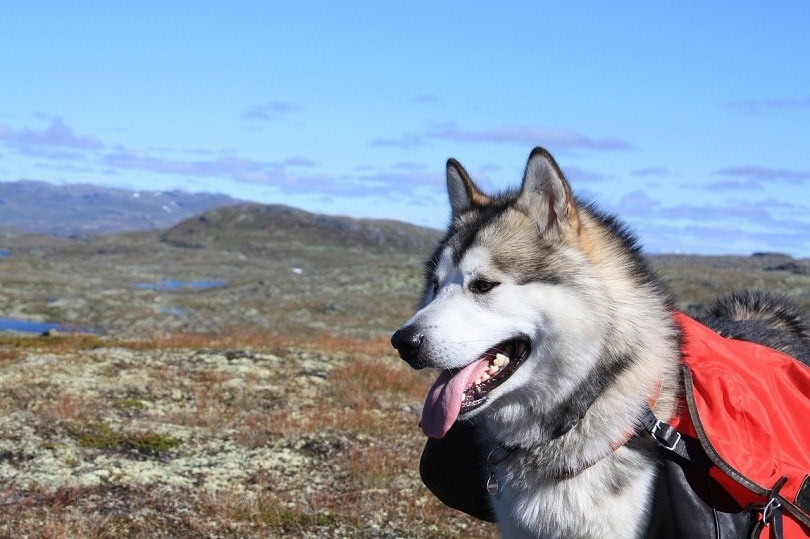
Temperament & Intelligence of the Giant Alaskan Malamute
The Giant Alaskan Malamute is about as friendly as they come, and for this reason, despite their large size, they do not make great guard dogs. They are known to be inherently trusting and exceedingly outgoing and will likely attempt to make friends and attempt a game of fetch with a would-be intruder rather than chase them away! They are working dogs through and through, with a ton of energy, strength, and stamina, but nowadays, they have become popular as companion animals.
Everyone is a friend to Malamutes, including strangers, and due to their history of working in a pack and closely with humans, they thrive off of having human company. These dogs are not suited for small homes or apartments and do not enjoy being left alone —they’ll make this apparent by tearing into anything that they can find. To own a Malamute, you need a large area for them to play in and a ton of time to exercise them, and they should be left alone as little as possible. Bear in mind that these large dogs are expert escape artists, so they need to be in a well-fenced yard. If they are not adequately exercised and left alone too much, they will do their best to escape the yard and find a sled to pull!
Are These Dogs Good for Families?
Giant Alaskan Malamutes are well-suited for families, provided that they get enough exercise and are trained properly. Their huge size and abundant energy can be overbearing for smaller kids, and Malamutes can easily knock them over while playing. While they are never aggressive, they are working dogs that need to be adequately exercised and trained to have them as a part of a family.
Does This Breed Get Along With Other Pets?
These dogs are generally fine with other dogs, but they are known to be fairly territorial and highly food motivated. Remember that their ancestors would go for long stretches in the bitter cold for miles and miles with not much food, and their genes remember this. They also have a hunting history, helping the Innuit hunt and track small game, so they have a fairly strong instinct to chase — a trait that your cat will not appreciate!
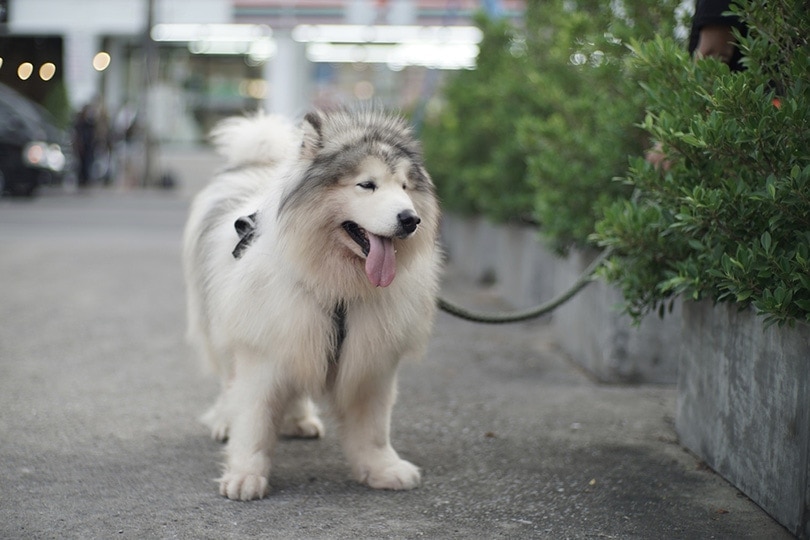
 Things to Know When Owning a Giant Alaskan Malamute
Things to Know When Owning a Giant Alaskan Malamute
Food & Diet Requirements
Giant Alaskan Malamutes need food that is specially formulated for large breed dogs. These dogs are prone to overeating and obesity and need food with high-quality, nutrient-dense ingredients that are free from empty calories. These dogs should definitely not be free-fed or given too many table scraps, as they can quickly gain extra weight, especially when not adequately exercised. Their food intake needs to be carefully monitored, and we recommend feeding them a small meal in the morning and another at night.
Dry kibble is great for these pooches, as long as it is of high quality and high in protein — at least 25%-40% — and they’ll need around 6 cups per day. Read the ingredients, and make sure the first listed ingredient is from an animal source. We recommend substituting their kibble with lean meats and organ meats occasionally too. This will give them welcome variety and essential amino acids and healthy fats to help keep their coats healthy and shiny.
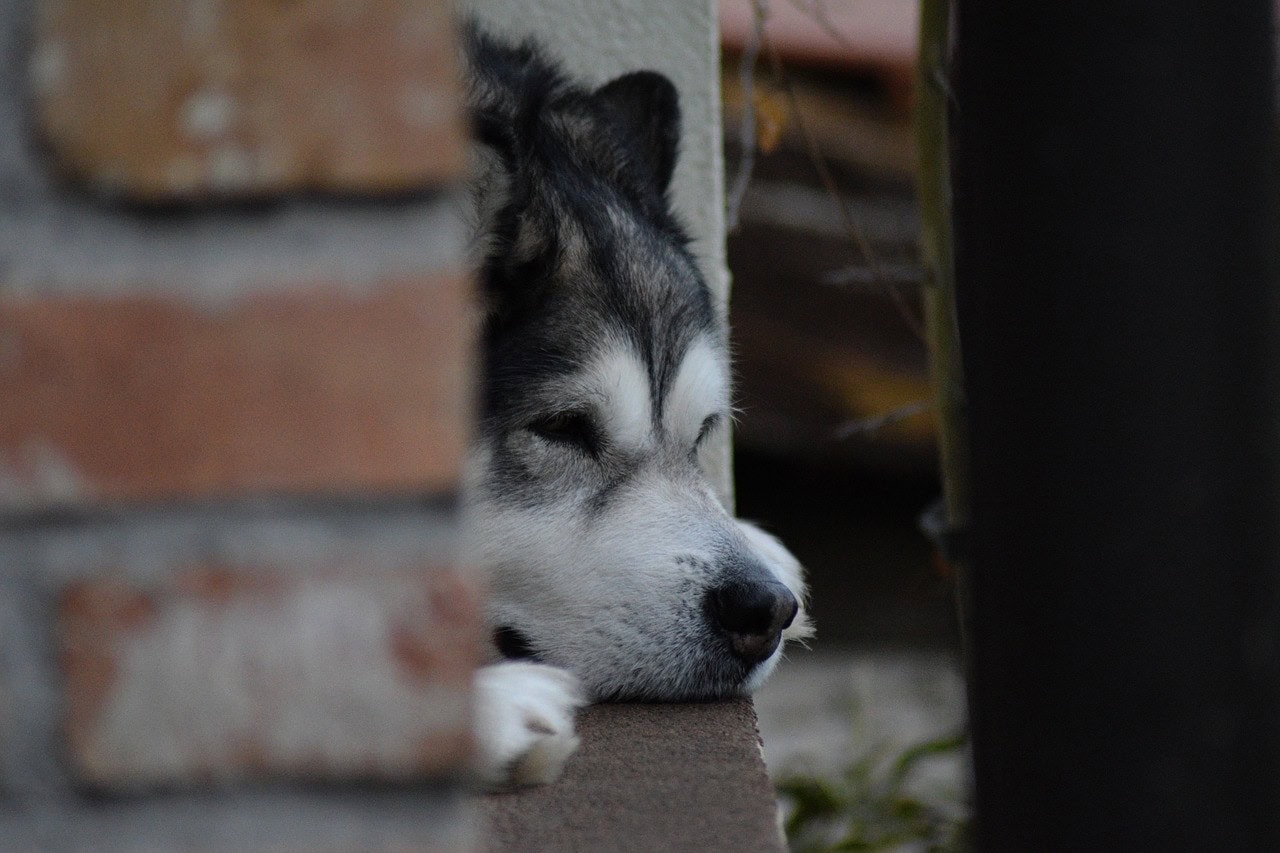
Exercise
The Giant Alaskan Malamute was bred to pull heavy sleds for hours on end through harsh terrain, so they need a ton of exercise. These dogs have an incredible amount of stamina, and it can be a challenge to tire them out; they will quickly resort to destructive behavior if not given the exercise that they need.
They’ll need at least 2 hours of intensive exercise every day. This includes long walks and runs, as well as games like fetch or agility exercises. They will benefit greatly from mentally stimulating activities too, as they were bred to complete specific tasks, and they love to have a direct goal to achieve. Due to their sledding history, they’ll love pulling you around with a pair of rollerblades or running alongside you while you cycle.
Keep in mind that Malamutes have thick double coats that are ideal for cold climates, so you need to be careful to not overdo exercise in summer months, as they can swiftly overheat.
Training
Alaskan Malamutes are highly intelligent and they know it! While they are accustomed to working closely with humans and have an innate desire to please their owners, they are independent dogs that can be stubborn at times. It takes a fair bit of discipline and experience to train these dogs successfully, so they are not recommended for novice owners. They are slow-growing and slow-maturing dogs and typically only reach full maturity at around 3 years old. This can also present a challenge in training, as these are their formative years, and they retain their puppy-like averseness to being told what to do. It takes a ton of patience, time, and a firm yet gentle hand to successfully train a Malamute.
Malamutes are notorious diggers and will swiftly litter your back yard with holes if given the chance. This trait is difficult to train out of them, and most Malamute owners recommend giving them their own spot to dig rather than attempting to train them to stop.
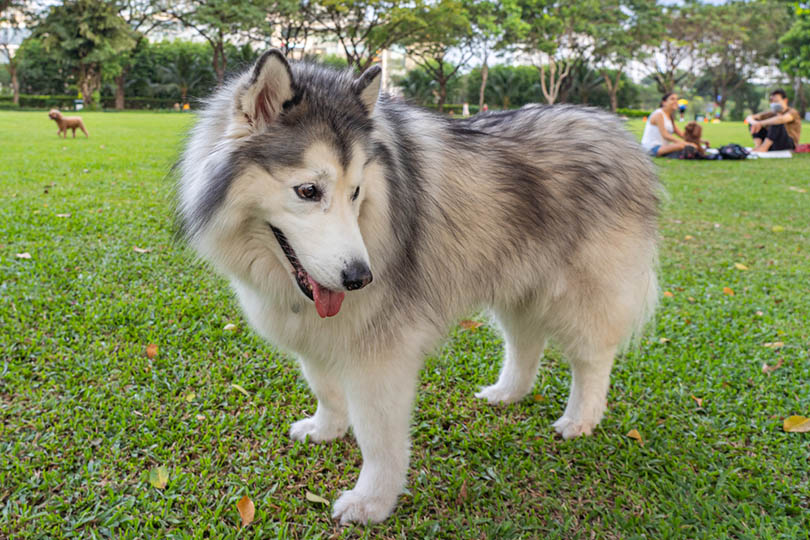
Grooming ✂️
Alaskan Malamutes shed frequently and in huge amounts, and Giant Malamutes have even more hair to shed. They are known to shed moderately all year round but will “blow” their coats and shed excessively twice a year alongside seasonal changes, so regular brushing is vital to remove excess hair. The almost never-ending amount of hair that these dogs can shed can be mind-blowing, even with daily brushing, so it’s probably worthwhile to invest in a dog vacuum when owning a Malamute.
Health and Conditions
While Giant Alaskan Malamutes are a healthy breed in general, they can suffer from several health conditions, most of which are due to their massive size. This is why it’s vital to make sure they don’t get overweight.
These structural diseases include hip and elbow dysplasia, patellar luxation, and osteochondritis, all of which can be largely prevented by a healthy diet. All these conditions can also lead to arthritis in senior dogs.
Less commonly, Malamutes can be affected by eye issues, including progressive retinal atrophy and cataracts. Hypothyroidism and Von Willebrand’s disease have also been seen occasionally.
- Obesity
- bloat
- progressive retinal atrophy
- cataracts
- Hip and elbow dysplasia
- patellar luxation
- osteochondritis
- hypothyroidism
- Von Willebrand’s disease
Male vs. Female
If you have decided these giant pooches are the dogs for you, the last decision to make is whether to bring home a male or female. There are a few small but important differences to take into consideration to help you make your decision.
While Giant Alaskan Malamutes can vary in size, males are generally larger than females. Malamutes tend to mature slowly in general, but males more so, and they can be a bit more of a challenge to train. Males are more stable in mood and are generally always up for playing, while females tend to have mood swings and prefer to do things on their own terms. The same goes for affection; females are most definitely affectionate but will politely walk away when they’ve had enough, while males will take all they can get.
Remember that all Malamutes are unique individuals, and most differences in personality are largely anecdotal. Your Malamute’s temperament is affected far more by their training, environment, and upbringing rather than their sex. Neutering males and spaying females will also negate many of these differences in temperament.
Final Thoughts
Giant Alaskan Malamutes are gorgeous, loving, affectionate, loyal, and dignified dogs that have giant personalities that live up to their name. They are gentle and sweet dogs that are friendly to almost everyone, family and new faces alike, and with proper guidance, they make great family pets.
These dogs are not for everyone, though, and a Giant Malamute is a massive responsibility. They need a great deal of grooming, a ton of attention, a large space to run around in, and several hours a day devoted to exercise. They can be a real challenge for novice owners to train, so you need to put in serious consideration before bringing home one of these dogs.
That being said, if you are willing, able, and up for the task of meeting these challenges head-on, the Giant Alaskan Malamute is an incredible animal that you will form a powerful bond with, and they are one of the most unique and beautiful dogs out there.
Featured Image Credit: Alaskan Malamute, Pixabay

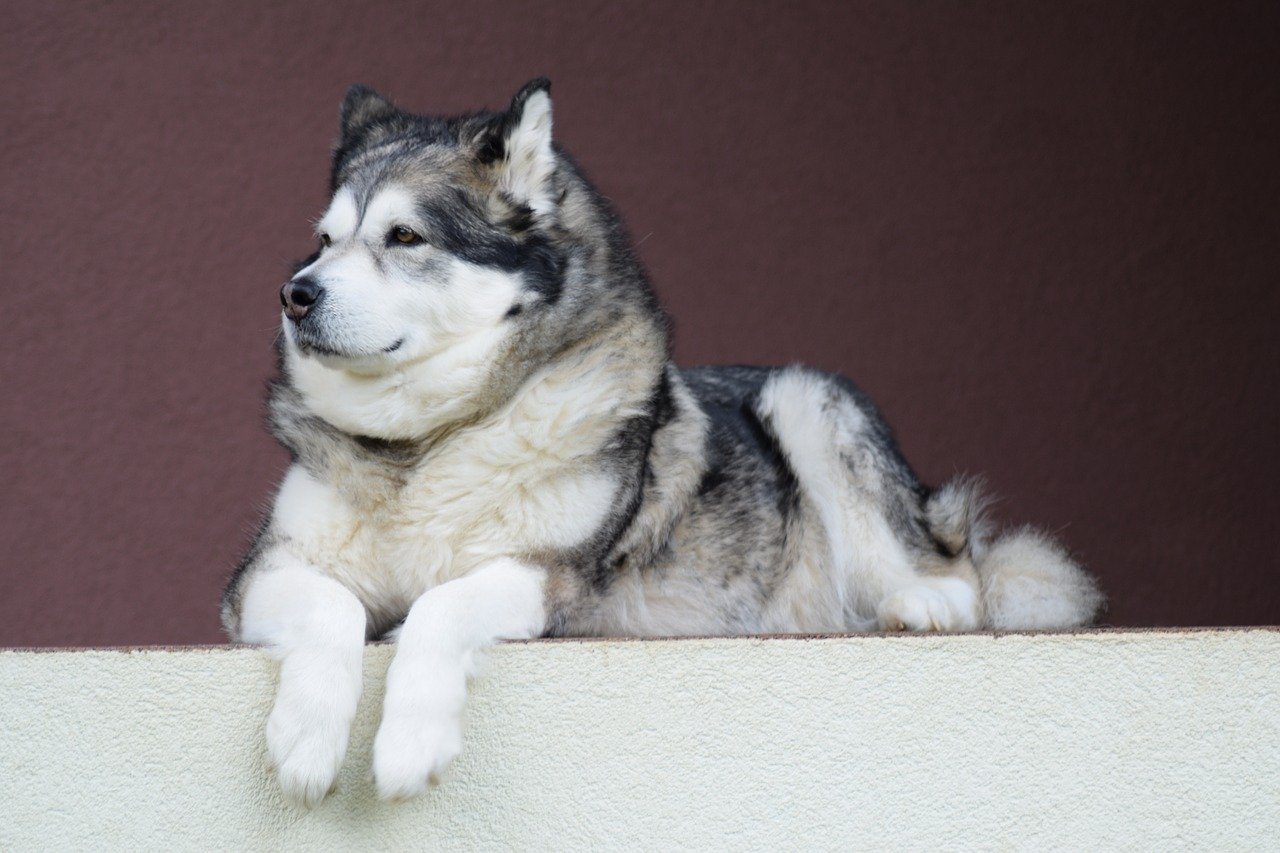
 Giant Alaskan Malamute Puppies — Before You Buy
Giant Alaskan Malamute Puppies — Before You Buy

 Things to Know When Owning a Giant Alaskan Malamute
Things to Know When Owning a Giant Alaskan Malamute
